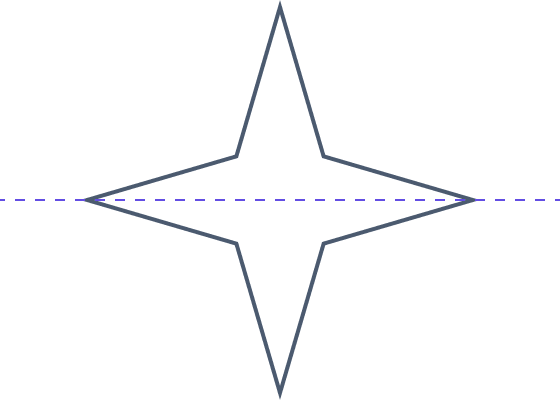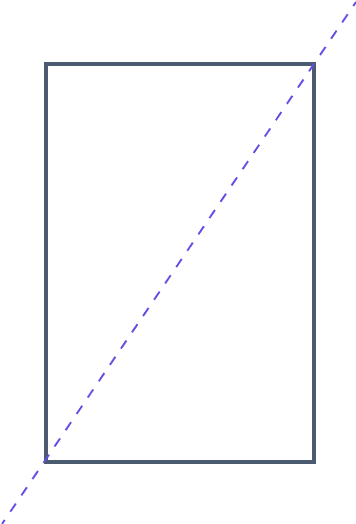Line of Symmetry - Types and Real Life Example
December 12, 2022

The term "line of symmetry" is the line that splits an object into two identical halves. This indicates that both halves of the object would perfectly match if you folded it along the line.
Line of Symmetry Definition
An imaginary line that runs through the middle of an object is known as a line of symmetry. Therefore, you will receive two or more comparable figures if you fold the body along this axis, as demonstrated in the example of the starfish below.

Types of Lines of Symmetry
The line of symmetry can be classified depending on how it is oriented.
1- Horizontal line of symmetry
A horizontal line is said to be a horizontal line of symmetry if it splits an object into two identical halves. In an object, the horizontal line of symmetry runs from left to right (or vice versa).

2- Vertical Line of Symmetry
A vertical line is said to be vertical if it splits an object into two identical halves. An object is divided into mirror halves along a vertical line that runs from top to bottom (or vice versa).

3- Diagonal Line of Symmetry
A diagonal line is said to be a diagonal line of symmetry if it splits an object into two identical halves. An object’s diagonal line of symmetry is tilted or sideways.

Types of Symmetry
When you flip, slide, or turn an object, symmetry may be seen. Four different types of symmetry can be seen in other contexts.
- Translation Symmetry
- Rotational Symmetry
- Reflection Symmetry
- Glide Symmetry
1- Translation Symmetry
The identical orientation in an object’s forward and backward motions as it is translated or transferred from one point to another is referred to as translational symmetry. It is described as sliding about an axis of an item. This is illustrated in the figure below, where the shape is moved forward and backward while maintaining the same orientation.
2- Rotational Symmetry
Rotational symmetry, sometimes called radial symmetry, occurs when an item is rotated about a specific point. When a shape rotated, rotational symmetry was present, and the shape matched the origin exactly. Numerous geometric shapes contain rotational symmetry. Circles, squares, and rectangles, for instance, have rotational symmetry. Rotational symmetry is also present in nature, such as in a flower’s petals.

3- Reflexive Symmetry
A reflection symmetry occurs when one half of an object reflects the other. Line of symmetry or mirror symmetry is another name for it. Nature offers a classic illustration of reflection symmetry, as shown in the picture below.
4- Glide Symmetry
A glide reflection is a result of combining reflection and translation symmetry. Its nature is commutative. This means altering the combination’s order will not affect the glide reflection’s output. The arrangement of leaves on a branch is the ideal illustration of a glide symmetry. The leaf orientation depicted in the image, however, only some leaf orientations have gliding symmetry.
Line of Symmetry Examples
Below are a few instances of the line of symmetry for various figures.
- A triangle has three, one, or even no lines of symmetry.
- There are four, two, or no lines of symmetry in a quadrilateral.
- Three lines of symmetry exist in an equilateral triangle.
- The regular Pentagon has five symmetry lines.
- Seven lines of symmetry make up a regular heptagon.
Can't find your query?
Fill out the form below with your query and we will get back to you in 24 hours.


